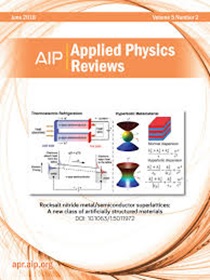基于超表面的Airy光片荧光显微镜
IF 11.6
1区 物理与天体物理
Q1 PHYSICS, APPLIED
引用次数: 0
摘要
光片荧光显微镜(LSFM)是一种重要的成像系统,用于观察生物样品具有高对比度,低光毒性和快速图像采集。传统的LSFM采用高斯照明,由于瑞利范围短,系统视场(FOV)有限。艾里光束作为一种传播不变光场,具有固有的扩展视场和提高显微镜轴向分辨率的作用。然而,实现Airy-LSFM需要一个复杂的照明系统。在这里,我们证明了使用偏振无关的Airy超表面将Airy光片方便地集成到LSFM中,以实现紧凑的照明,大系统视场和高图像质量。为了验证基于超表面的Airy LSFM (meta-Airy LSFM)的性能,我们对秀丽隐杆线虫(C. elegans)胚胎进行了荧光标记的离体成像。应用Richardson-Lucy反褶积技术进一步提高图像质量。实验结果表明,meta-Airy LSFM的轴向和横向分辨率分别为2.3 μm和0.69 μm,视场提高了10倍,达到200 μm。在LSFM中,Airy光片超表面的紧密集成实现了广泛的生物应用,并且具有很大的潜力,可以轻松地适应各种LSFM模式。本文章由计算机程序翻译,如有差异,请以英文原文为准。
Metasurface-based Airy light-sheet fluorescence microscopy
Light-sheet fluorescence microscopy (LSFM) is an essential imaging system for observing biological samples with high contrast, low phototoxicity, and rapid image acquisition. Traditional LSFM utilizes Gaussian illumination with a limited system field of view (FOV) due to the short Rayleigh range. As one kind of the propagation-invariant light field, the Airy beam can inherently extend the FOV and enhance the axial resolution for microscopy. However, implementing an Airy-LSFM requires a complex illumination system. Here, we demonstrate that the Airy light-sheet is conveniently integrated into LSFM using a polarization-independent, Airy metasurface to achieve compact illumination, large system FOV, and high image quality. To verify the performance of the metasurface-based Airy LSFM (meta-Airy LSFM), ex vivo imaging of fluorescently labeled Caenorhabditis elegans (C. elegans) embryos was conducted. The Richardson–Lucy deconvolution technique was applied to further improve the image quality. The experimental results show that the axial and lateral resolution of the meta-Airy LSFM is 2.3 and 0.69 μm, respectively, while the FOV is significantly improved tenfold, up to 200 μm. The tightly packed integration of the Airy light-sheet metasurface in LSFM enables wide-ranging biological applications and has great potential to be easily adapted across various LSFM modalities.
求助全文
通过发布文献求助,成功后即可免费获取论文全文。
去求助
来源期刊

Applied physics reviews
PHYSICS, APPLIED-
CiteScore
22.50
自引率
2.00%
发文量
113
审稿时长
2 months
期刊介绍:
Applied Physics Reviews (APR) is a journal featuring articles on critical topics in experimental or theoretical research in applied physics and applications of physics to other scientific and engineering branches. The publication includes two main types of articles:
Original Research: These articles report on high-quality, novel research studies that are of significant interest to the applied physics community.
Reviews: Review articles in APR can either be authoritative and comprehensive assessments of established areas of applied physics or short, timely reviews of recent advances in established fields or emerging areas of applied physics.
 求助内容:
求助内容: 应助结果提醒方式:
应助结果提醒方式:


